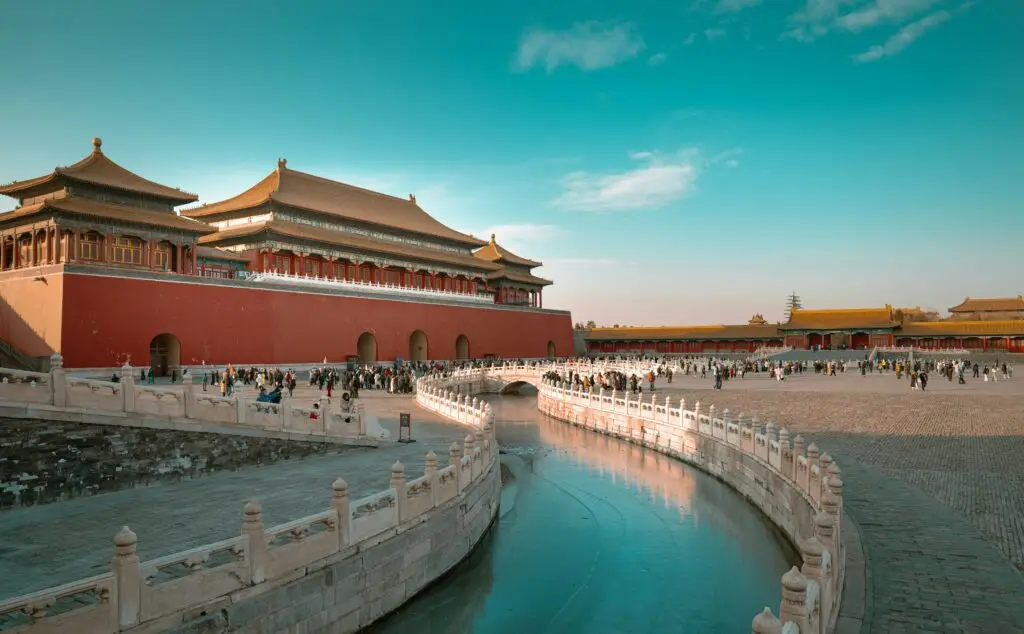Traveling through China is like traveling through a spice map — each region tells its story with chilies, peppers, and bold seasonings that awaken the palate and the soul. For those who crave fire in their food, China is a paradise where “spicy” isn’t just a taste, but a way of life.
My first encounter with Chinese spice was in Chengdu, Sichuan, the undisputed capital of fiery flavors. The air itself seemed laced with the fragrance of dried chilies and peppercorns. At a traditional hotpot restaurant, I watched a bubbling cauldron of crimson broth arrive at the table, shimmering with chili oil and floating peppercorns. The first bite of beef dipped into that broth was electric — a numbing-tingling explosion from the famous mala (麻辣, “numbing and spicy”) combination. The Sichuan peppercorn didn’t burn like chili; it buzzed, numbed, and then made the chili burn feel even more alive. Every ingredient — from lotus root slices to tender lamb — carried that fiery signature.
A train ride away, in Chongqing, spice took on an even more intense identity. Chongqing hotpot was spicier, oilier, unapologetically bolder. Street stalls offered bowls of xiaomian (spicy noodles) — a humble dish of chewy noodles in chili-infused broth that had locals lining up early in the morning. Eating it, I realized spicy food here isn’t just about heat, it’s about comfort, about a daily ritual that energizes the body and warms the spirit.
Heading east, I discovered that spicy food isn’t limited to Sichuan. In Hunan Province, the birthplace of Chairman Mao, locals say, “不怕辣, 就怕不辣” — “We’re not afraid of spice; we’re afraid of no spice.” Hunan cuisine is characterized by its fresh chili peppers rather than dried ones. Dishes like duojiao fish head (chopped chili fish head) stunned me with vibrant reds and greens, a mountain of fresh chilies piled on tender fish, each bite fiery yet surprisingly fragrant. Compared to Sichuan’s numbing heat, Hunan spice was direct and sharp — like a flame that licked but didn’t numb.
Even in the north, in places like Shaanxi, spice found its way into bowls of biangbiang noodles, thick ribbons of hand-pulled noodles smothered in chili oil, garlic, and vinegar. The sauce clung to every fold of the noodle, offering a mouthful of heat with every bite. Street corners filled with the aroma of spicy roujiamo (often called the “Chinese hamburger”), proving that even in colder climates, spice was an essential comfort.
What fascinated me most was how different regions shaped spice to reflect their culture. In Sichuan, it’s about balance — the dance of numbing and burning. In Hunan, it’s bold and upfront, using fresh chilies as the star. In the north, spice becomes hearty, paired with wheat-based staples to withstand the cold. Even in Yunnan, closer to Southeast Asia, spice is fragrant and herbaceous, with influences of lemongrass and tropical peppers.
As I traveled, I noticed that spicy food wasn’t just about taste; it carried a social spirit. Hotpot in Chengdu wasn’t eaten alone — it was shared, a bubbling pot at the center of laughter and conversation. Spicy noodles in Chongqing weren’t just a quick meal — they were a morning ritual shared with neighbors. Every bite carried not only heat, but also connection.
By the end of my spicy food journey, I realized China’s love for chili is more than culinary — it’s cultural. Spice here brings warmth to winter nights, energy to busy mornings, and togetherness to every table. For travelers, diving into China’s spicy dishes isn’t just about testing your tolerance for heat — it’s about tasting the heart of communities that embrace life with fire, flavor, and fearlessness.
So, when you come to China, don’t shy away from the red peppers. Sit down at a hotpot, pick up a bowl of chili noodles, or brave a mountain of fresh peppers on your fish. Taste the spice, feel the burn, and discover a side of China that’s as bold and unforgettable as its people.

